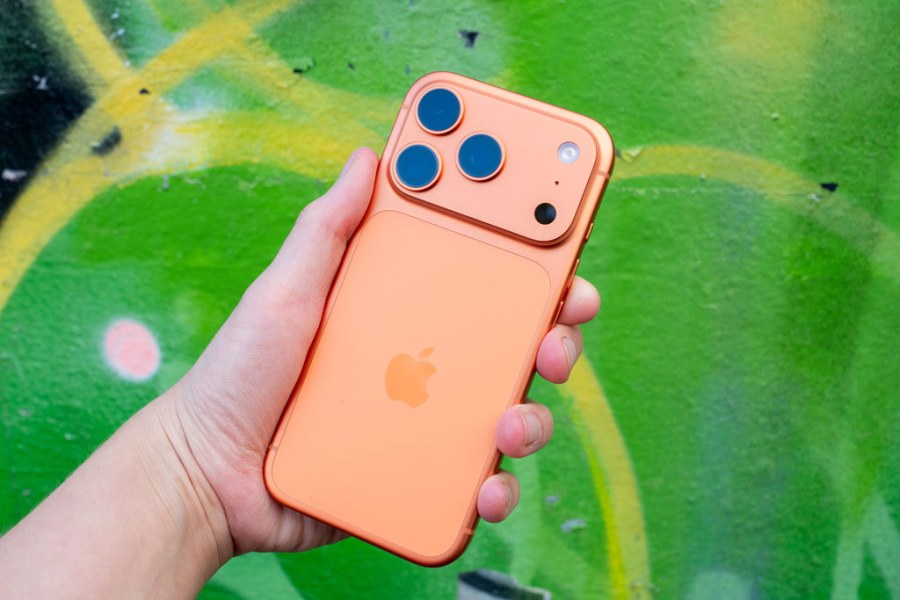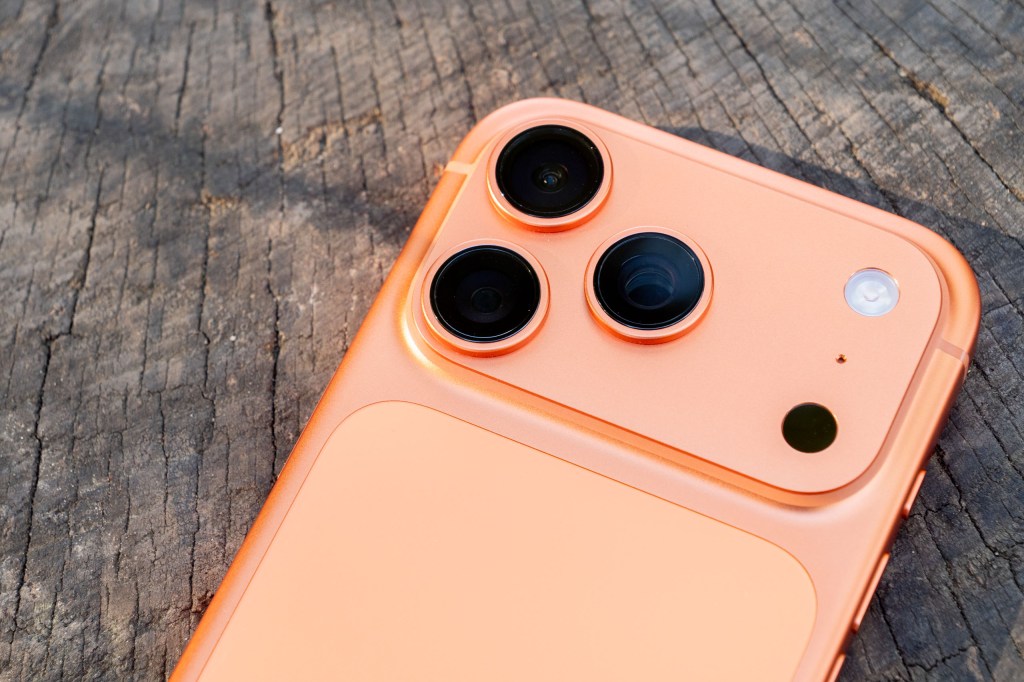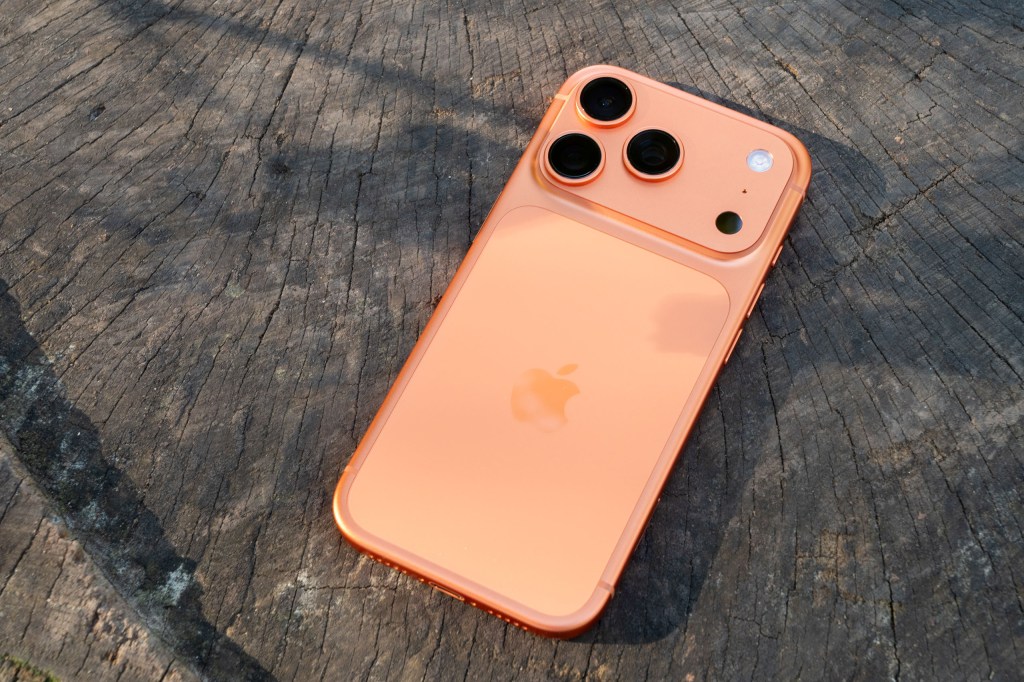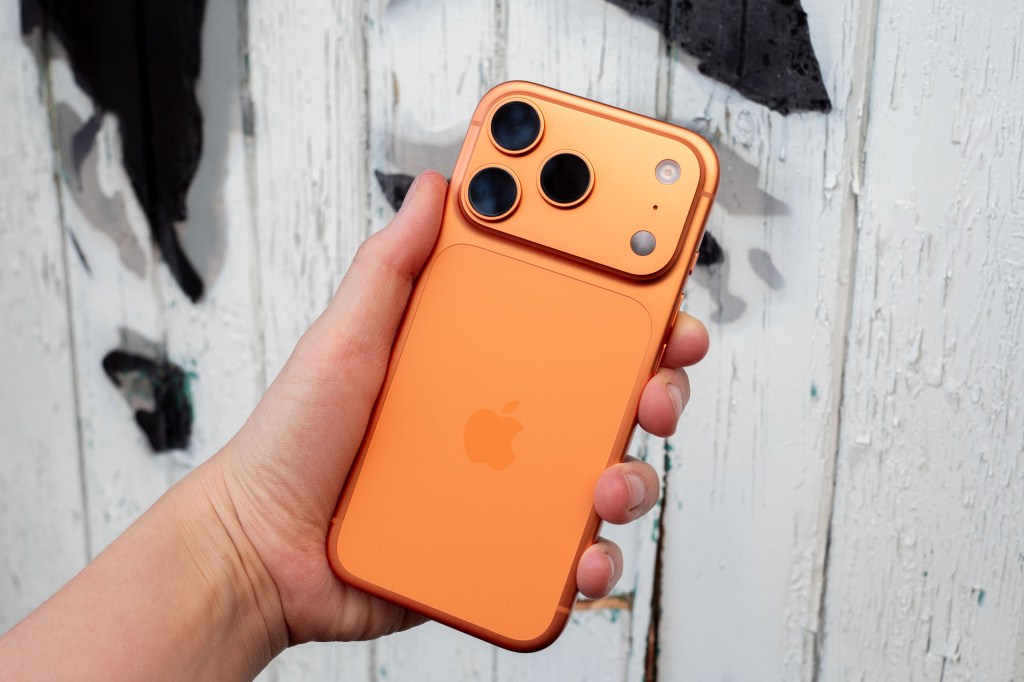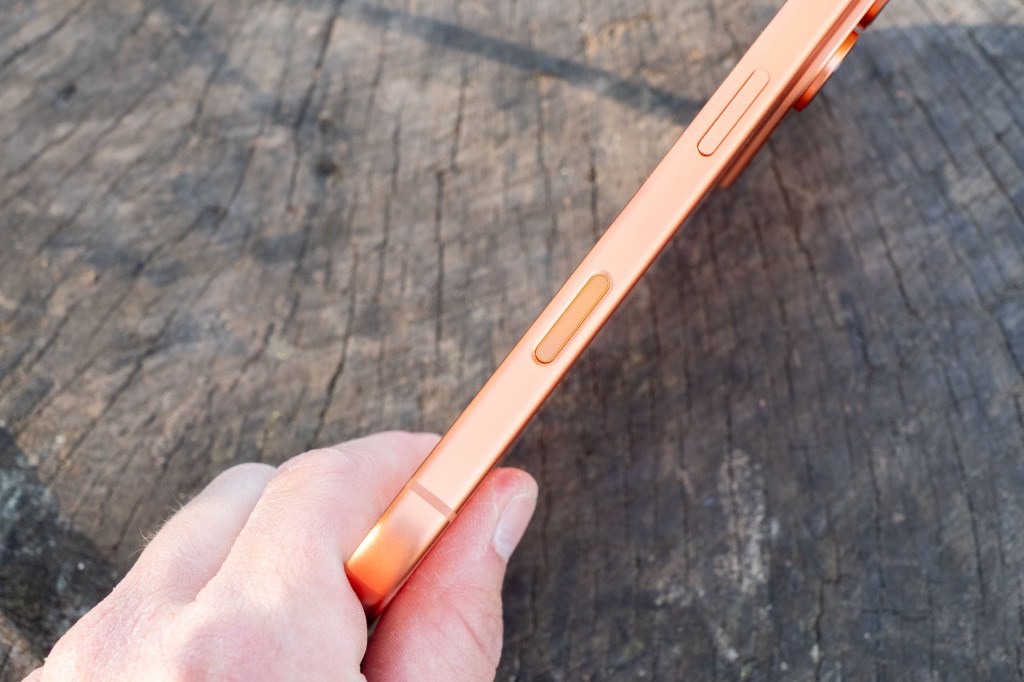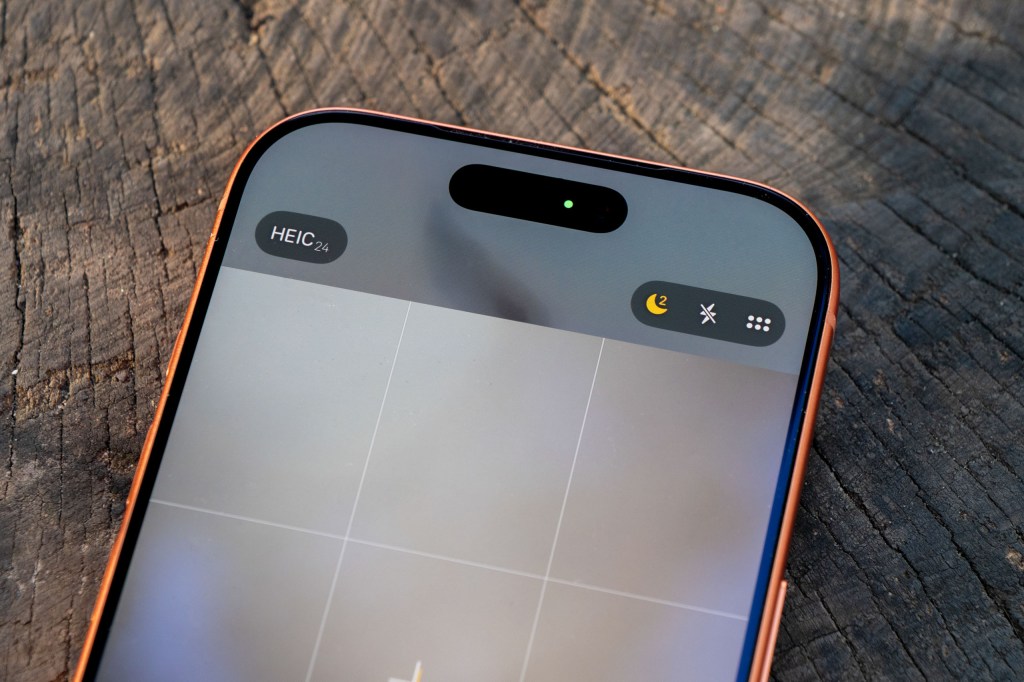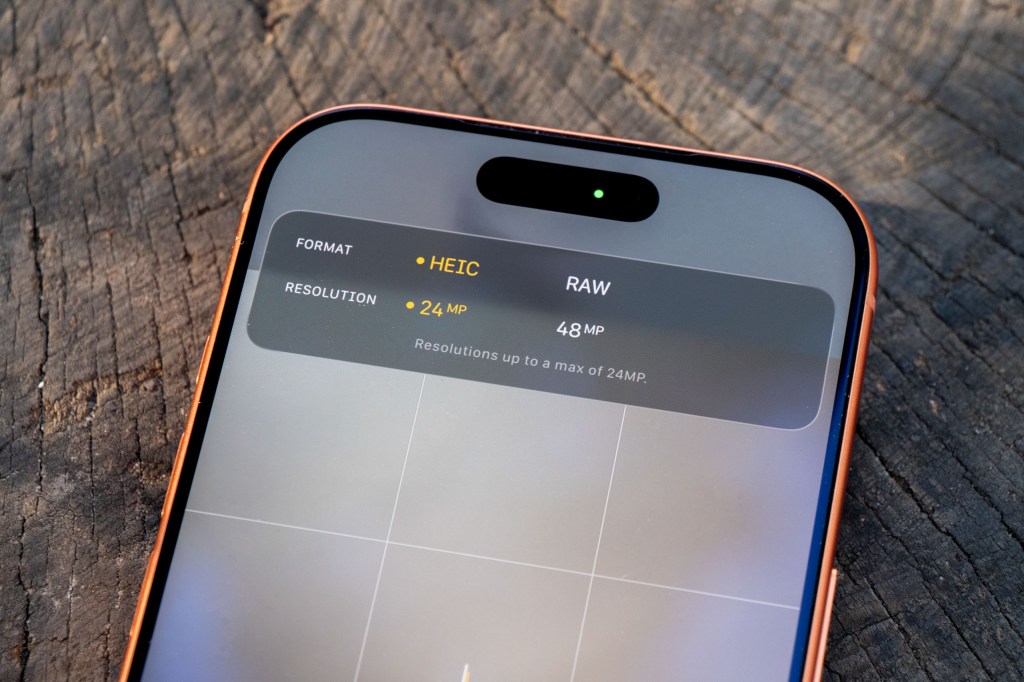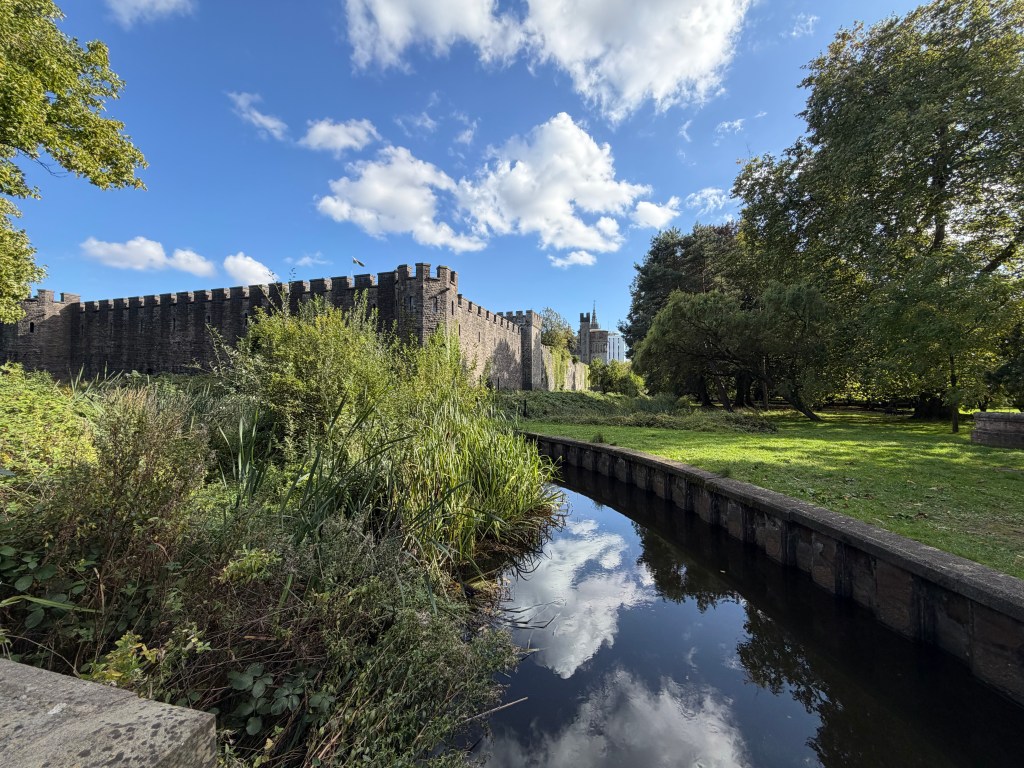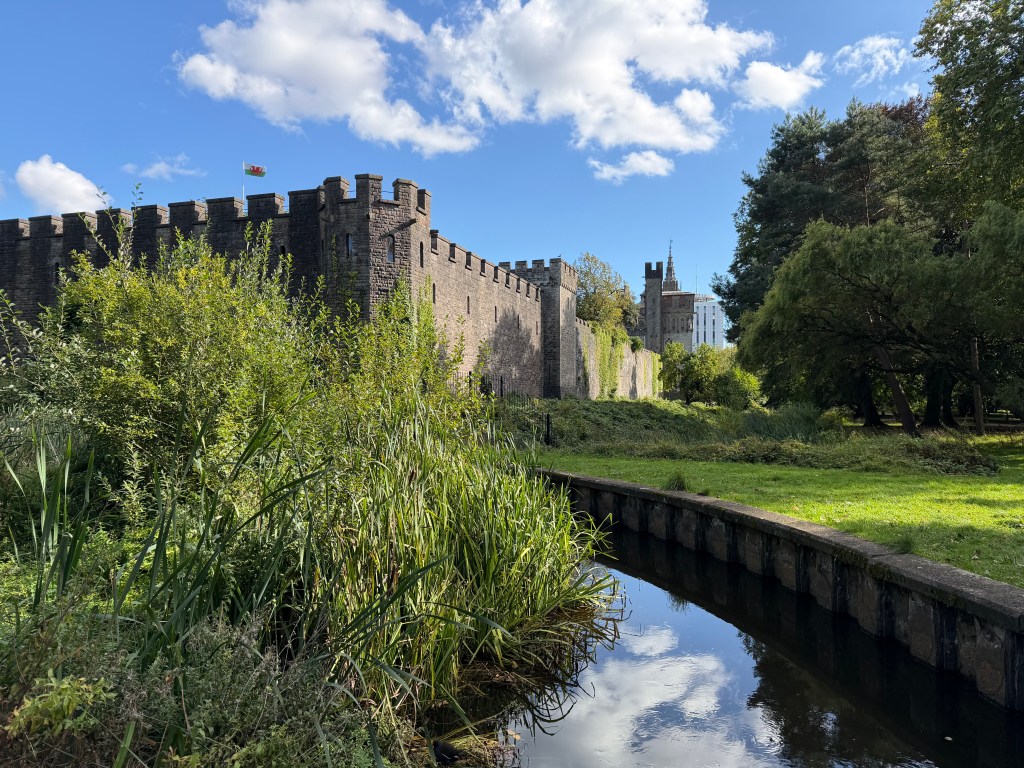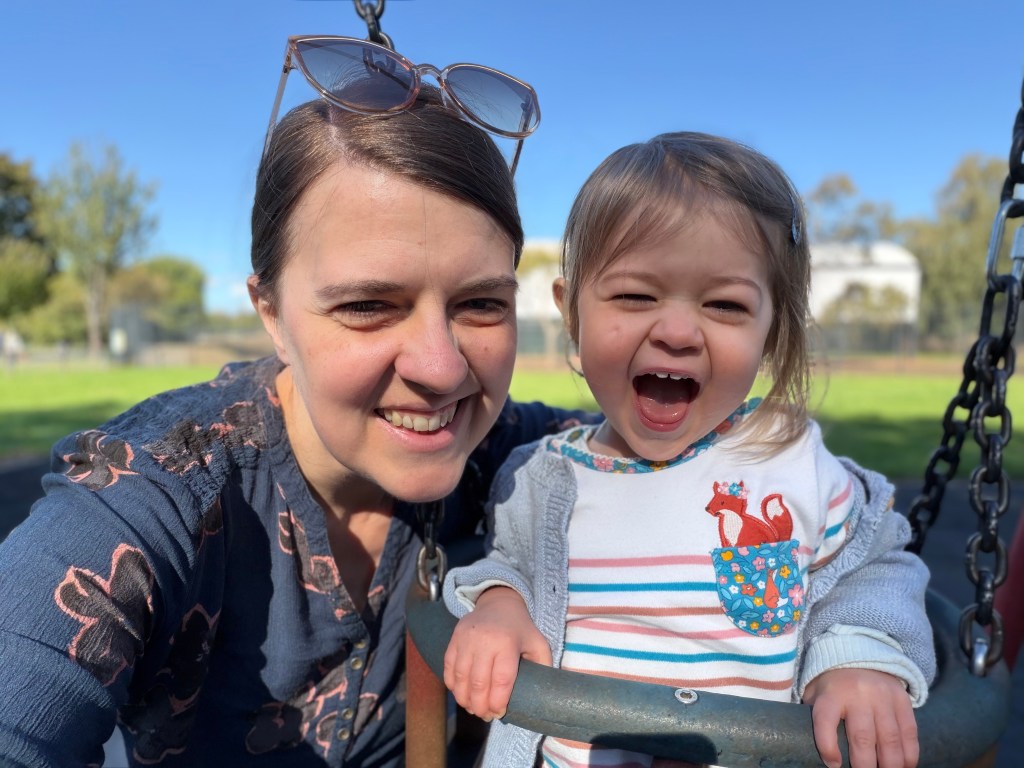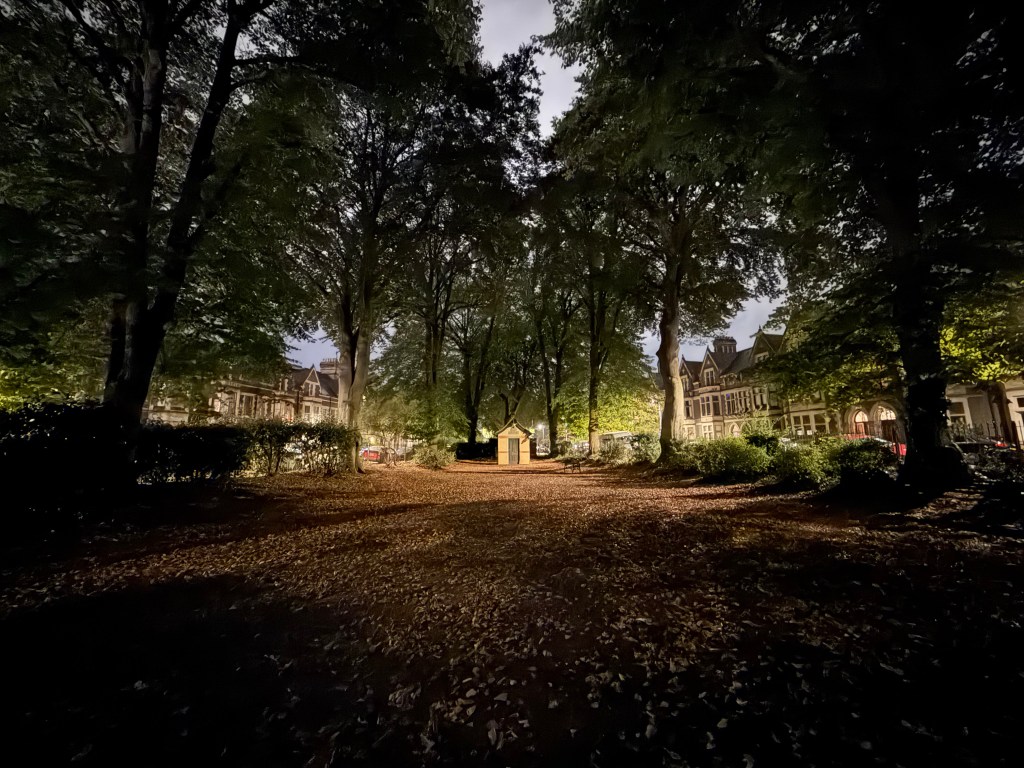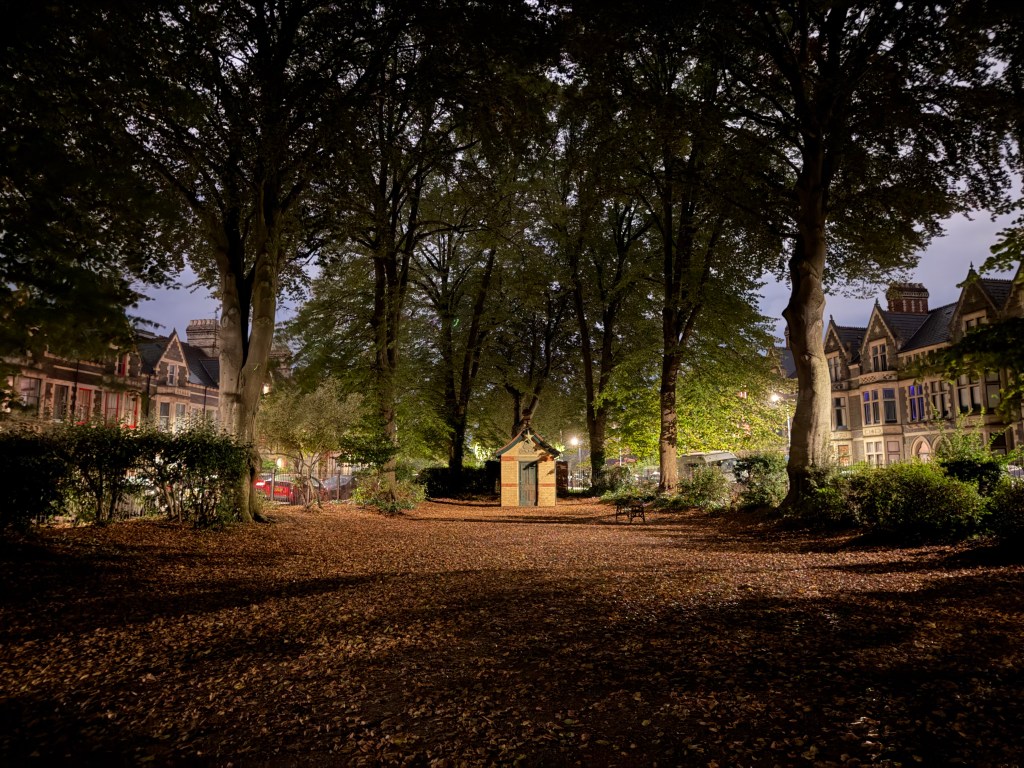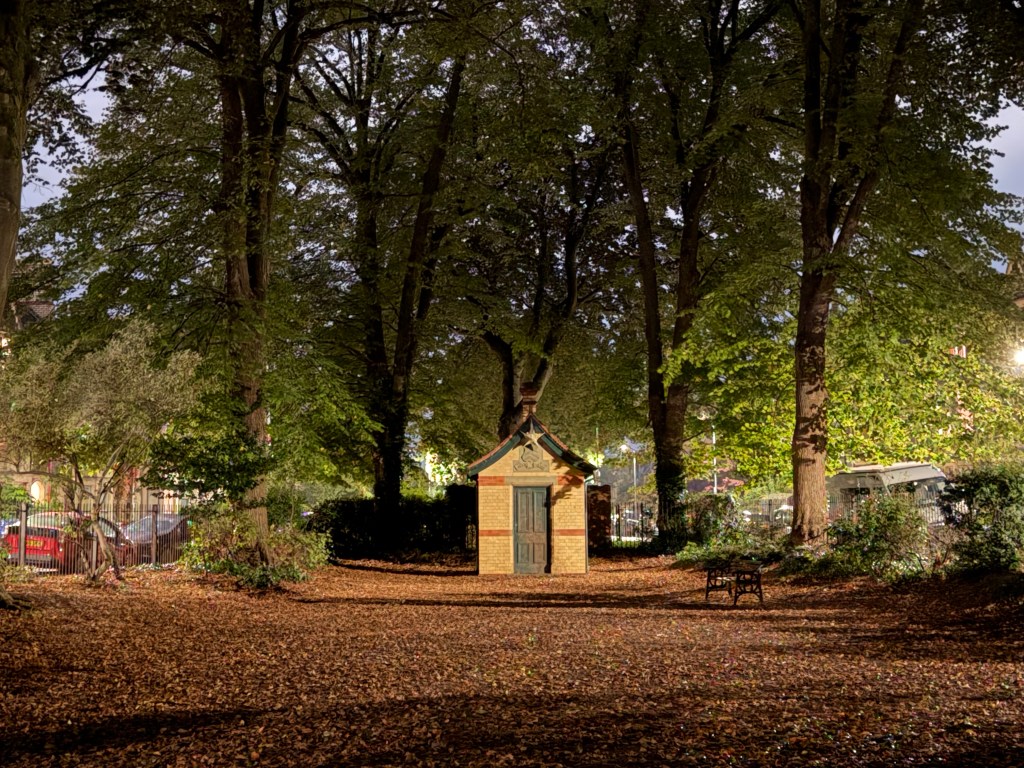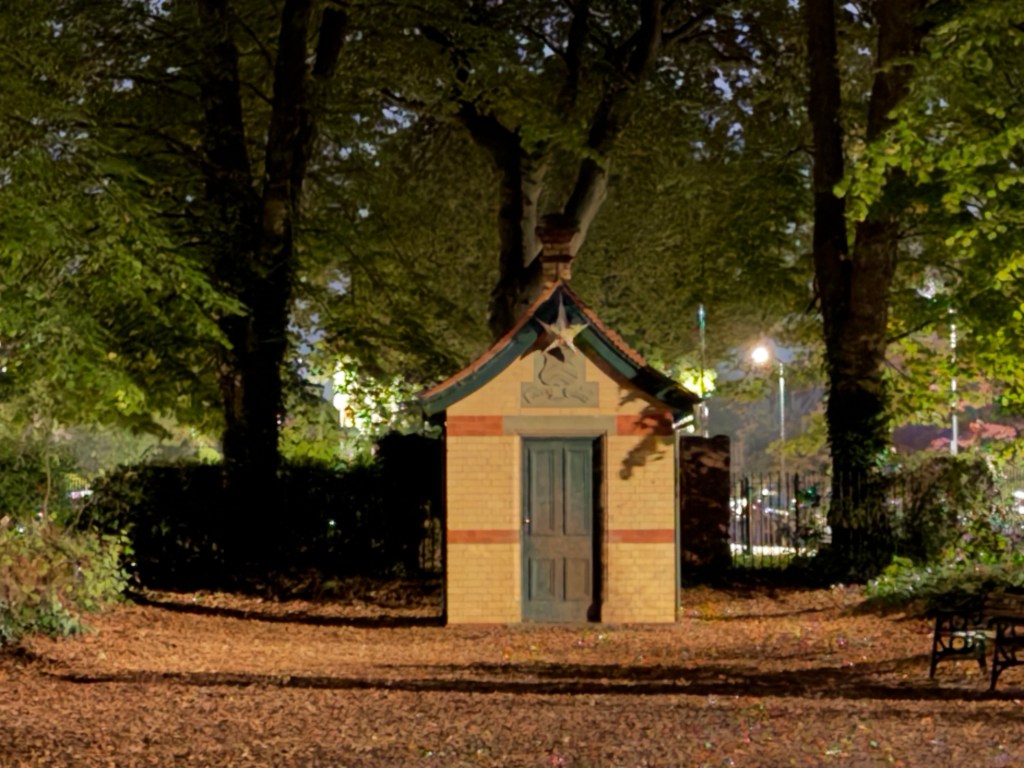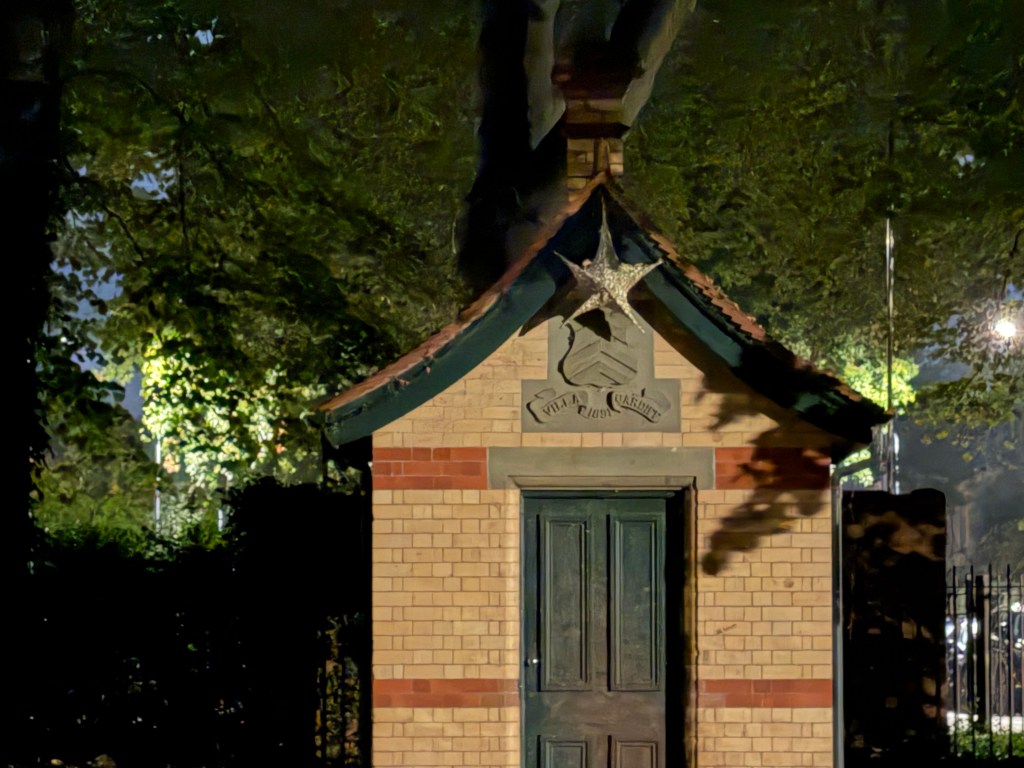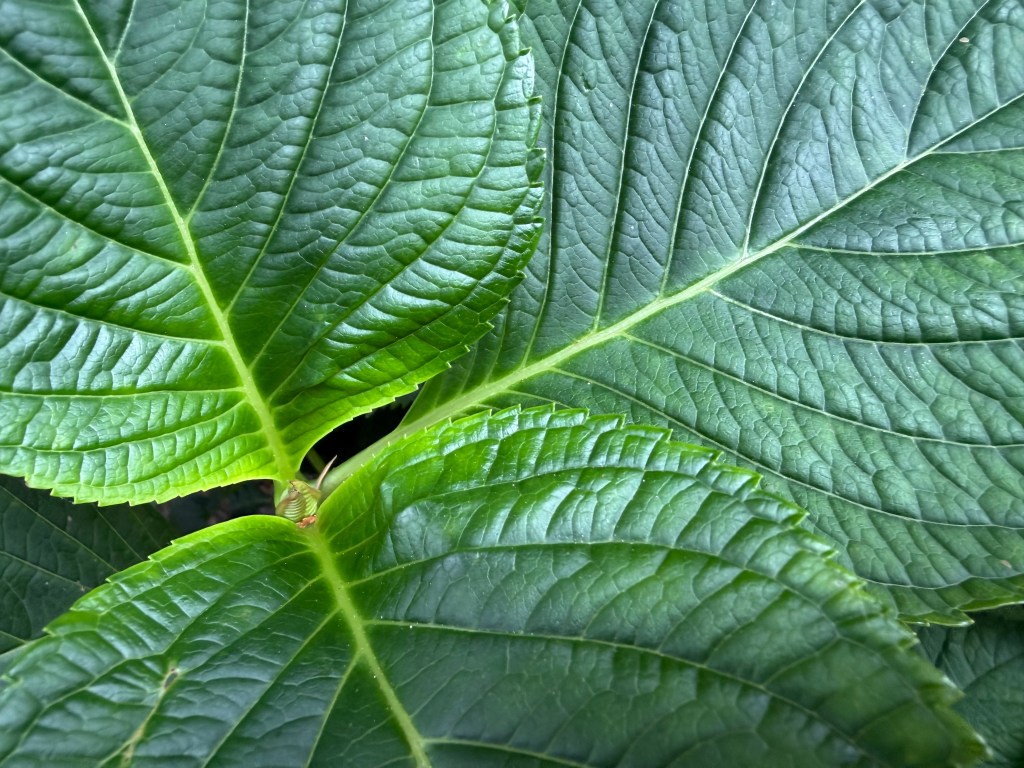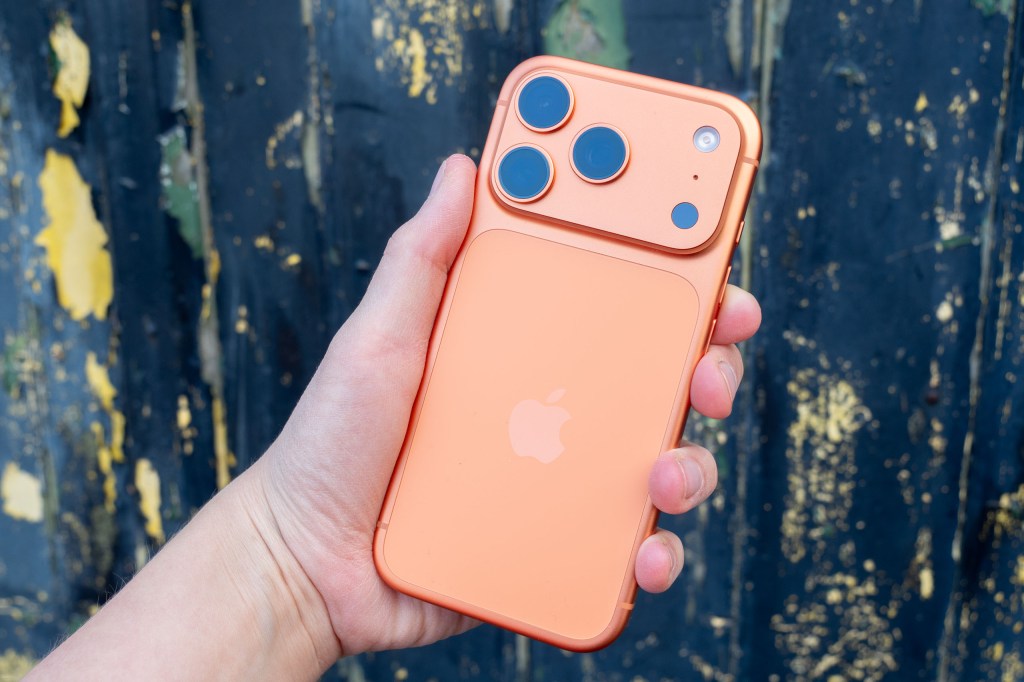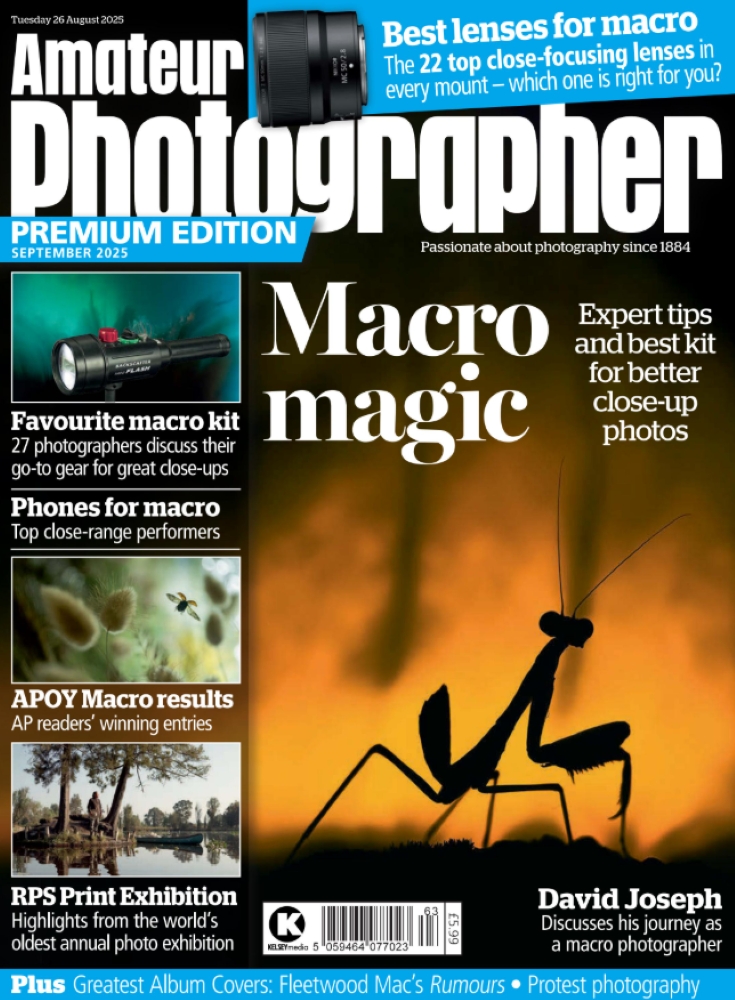Amateur Photographer verdict
As always, there’s a lot to like about the iPhone 17 Pro. It may not represent a huge jump in specs – again – but it has a very well-rounded spec sheet, with a solid camera, and long battery life.- Improved selfie camera
- Triple high-resolution sensors
- Tough body
- Relatively minor upgrade overall
- Limited colours
- High price
It seems very likely that the iPhone 17 Pro will end up sitting pretty high on our list of the best smartphones for photographers. As is often the case with iPhones, the upgrades compared to the previous model aren’t ground-breaking, but there have been a couple of notable improvements to the camera. Here we’ll take a closer look to see how these improvements impact on the overall performance of the device.
iPhone 17 Pro at a glance:
- 48MP wide camera, f/1.78 aperture, 24mm equivalent, OIS
- 48MP ultrawide camera, f/2.2 aperture, 13mm equivalent
- 48MP 4x telephoto, f/2.8 aperture, 100mm equivalent, OIS
- 18MP “Center Stage” selfie camera, f/1.9 aperture
- 4K 120p video recording
- 6.3” Super Retina XDR OLED screen
- Aluminium chassis with unibody design and Ceramic Shield front and back
- Processor: A19 Pro Chip
iPhone 17 Pro – Features
The big new photography upgrades for the iPhone 17 Pro are having triple high-resolution cameras (at last!) and an improved selfie camera (and presumably therefore performance – I’ll come to that later).
Apple is boasting that this phone offers the biggest “optical” zoom range of any iPhone, claiming it offers 8x zoom from the telephoto lens. It also says “it’s like having 8 pro lenses in your pocket”. You need to take all this with a very large pinch of salt. The lens is actually 100mm, or 4x zoom. This is actually a reduction from the 120mm (5x) of the iPhone 16 Pro.
Even so, the new telephoto camera is still perhaps the biggest upgrade for the new iPhone, with the 48MP sensor being not only a big jump in resolution but also being 56% larger physically.
So what’s this about 8x then? Well, that’s “optical quality” rather than actual “optical”. You get 200mm equivalent by using the central portion of the sensor – now that it’s 48MP rather than 12MP, there’s scope to do that and still keep a high resolution. We’ve seen this before from the 1x sensor, which also has a 2x “optical quality” setting you can use too.
We’ll take a look later to see how the new zoom actually shapes up in real-world usage – other smartphones on the market, such as the Google Pixel 9 and 10 series also offer “optical quality” zooming, too, so while it’s nothing new, it’s interesting to see such length on an iPhone for the first time.
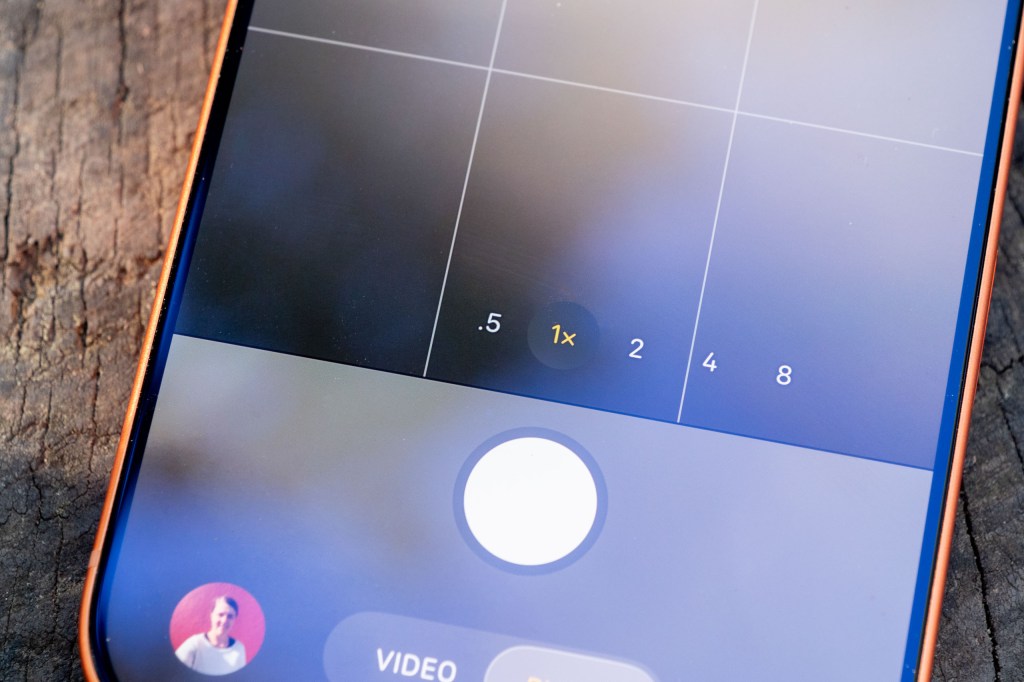
As for the 8 pro lenses claim – Apple gets to that by counting the three lenses, with an additional five coming from the macro setting, the 1.2x, 1.5x and 2x setting from the main camera and the 8x setting from the telephoto camera. It’s probably pretty obvious to most that “8 pro lenses” is a *bit* of a stretch, but hey, it’s still good to have that flexibility.
The new selfie camera has again seen a bump in resolution, with 18MP now the offering. There are smartphones out there which offer higher resolution front-cameras, but it’s not all about pixel count. The big draw here is the new square sensor, which gives it the ability to do some fun tricks such as expanding the field of view to get more (or less) of the background in, changing from landscape to portrait without having to physically move the phone’s orientation, and automatic field of view widening if additional people join you in the shot. You can also do things like dual capture video (where the front camera and the rear camera both record at the same time).
iPhone cameras have always had a good array of high-end video functionality – most of which will no doubt be completely ignored by the average user. Still, if you want it, there’s professional-level features such as ProRes RAW, AppleLog 2 and genlock. For everybody else, there’s 4K recording at up to 120fps, as well as options such as Cinematic (shallow depth of field) recording.
iPhone 17 Pro – Handling and Design
There are two varieties of iPhone 17 Pro – in this review I’m using the 6.3-inch version, but there’s also the 17 Pro Max, which has a 6.9-inch screen. Which size screen you prefer is down to personal taste – I prefer the more petite offering as I find it much easier to use for things like messaging without having to hold the phone with both hands, but those with larger hands or just the desire to see things on a larger screen may feel differently.
Once again this year, there’s no “punishment” in terms of the camera setup for opting for the smaller screen. While in previous years you’ve had to settle for a lesser zoom if you want a smaller screen, now the cameras on both the Pro and the Pro Max are exactly the same. Therefore, the bulk of this review covers both devices.
There have been some changes to the design of the iPhone 17 Pro when compared to its predecessor. The cameras are now housed in what Apple is calling a “plateau” – basically a bar covering the full width of the phone’s back. This is similar to some Android models, such as the Google Pixel 10 Pro, but it also has some additional benefits. Some elements of the phone’s design have been moved into the plateau, such as the antennae, leaving more room for a bigger battery, and therefore improved battery life. There’s also a new vapour chamber to dissipate heat, which could be useful for anyone using the phone to do things such as record lots of 4K video, or play games.
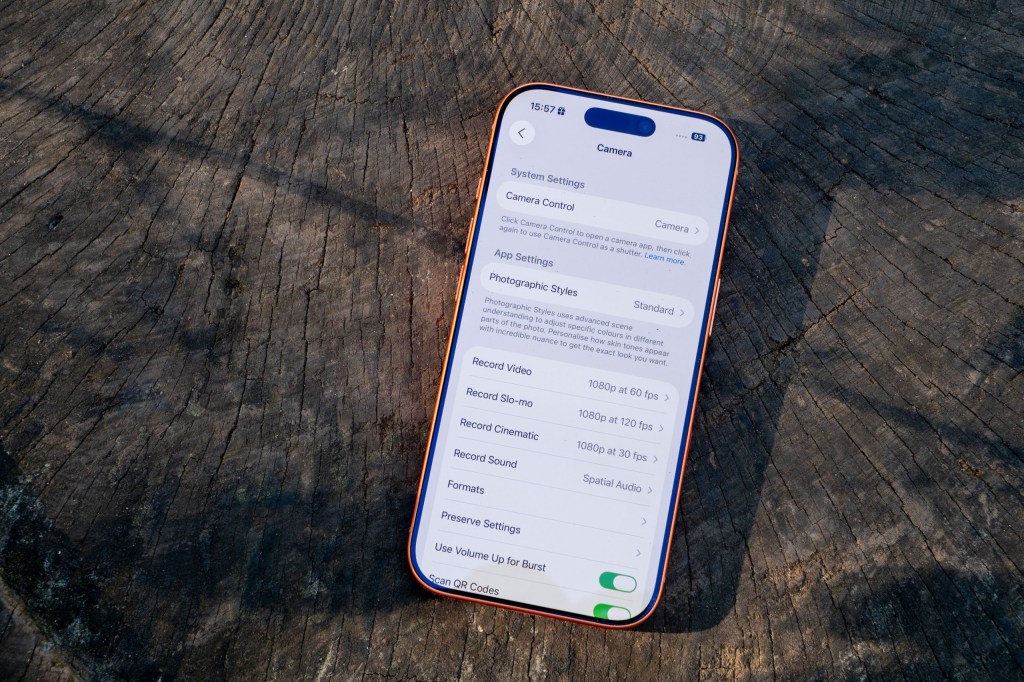
Because some of the phone’s elements have been moved into the plateau, it means that the phone’s battery is physically larger and therefore boasts a greater battery life. Apple itself doesn’t disclose battery figures in terms of mAh ratings, but those who have done “tear downs” have found the battery life to be significantly longer.
Apple itself says that the iPhone 17 Pro can playback video for 31 hours, compared to 27 hours for the iPhone 16 Pro. Both fast charging and wireless charging are available. Note, a battery charger doesn’t come in the box – no surprise for a modern phone, but also note that you’ll need a 40W or higher charger to enjoy fast charging, and you’ll need something MagSafe compatible to charge wirelessly.
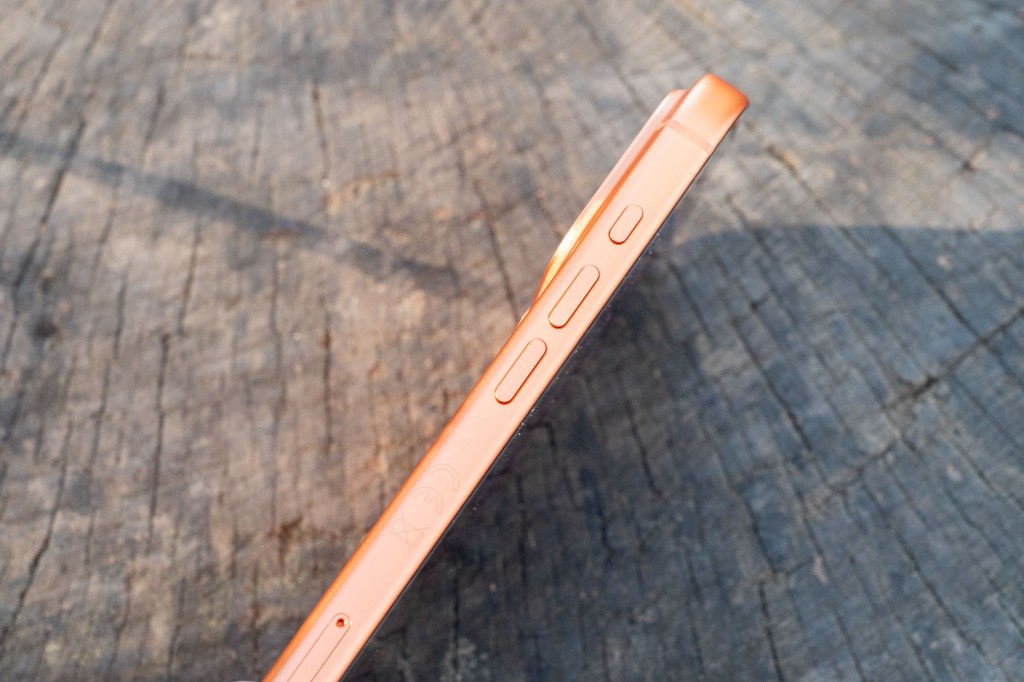
The previous iPhone 16 Pro boasted a titanium construction. For the 17 series, Apple has gone back to aluminium – a cheaper material, but it’s now a “unibody” so it’s still claimed to be very strong. Further boosting the tough credentials of the phone is the fact that it also now has both a Ceramic Shield front and back, where previously only the screen enjoyed this benefit. The 17 Pro has an IP68 rating for water and dust proofing, the same as the previous model.
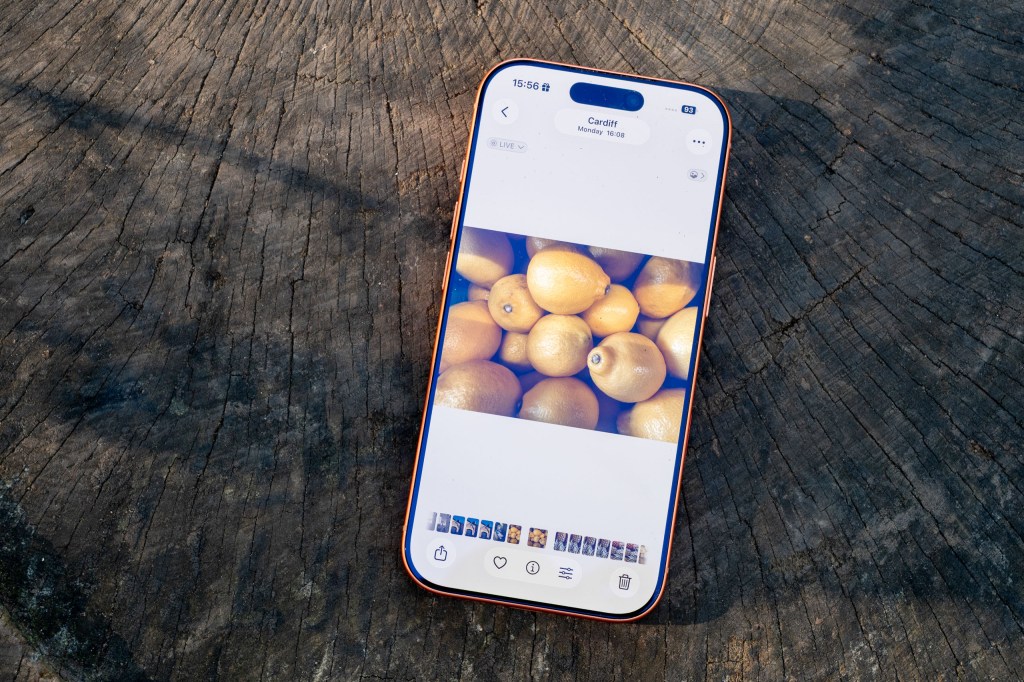
In terms of resolution, refresh rate and size, the Super Retina XDR screen is the same as the iPhone 16 Pro. So that’s 2622 x 1206 pixels, 120Hz and 6.3 inches. There has been an improvement to the brightness however, as it now maxes out at 3000 nits, compared to 2000 nits before. It’s also got better anti-reflection coatings.
Although the screen size is the same, the body of the phone is ever so slightly bigger and heavier before, but it’s not really enough to be hugely noticeable. Obviously with the new camera plateau you’re going to need a new case anyway.
Returning for the 17 Pro are both the physical Action Button and the Camera Control button – on the left hand side and the right hand side of the phone, respectively. The Action Button can be assigned to activate the camera (as well as a number of other functions), and I find myself using this all the time to quickly start up the camera. The Camera Control button can be used for a variety of options, including moving between various camera lenses, zooming, switching between different photographic styles and more. You can also use it to take a shot, too.
I’m not personally a huge fan of the Camera Control button, as I find it a little bit fiddly – especially once you’ve got a case on the phone, but others may find it useful if they prefer using physical buttons.
iPhone 17 Pro – Camera App
The native camera app has had some slight rejigging for iOS 26, meaning if you’ve got an older iPhone you’ll also see some changes to the camera interface. On the whole it remains fairly simple. Sadly, we still see no sign of a “Pro” or “Advanced” mode for iPhone. Still, there are dozens of apps which give you the functionality to control things such as shutter speed and ISO if you so desire.
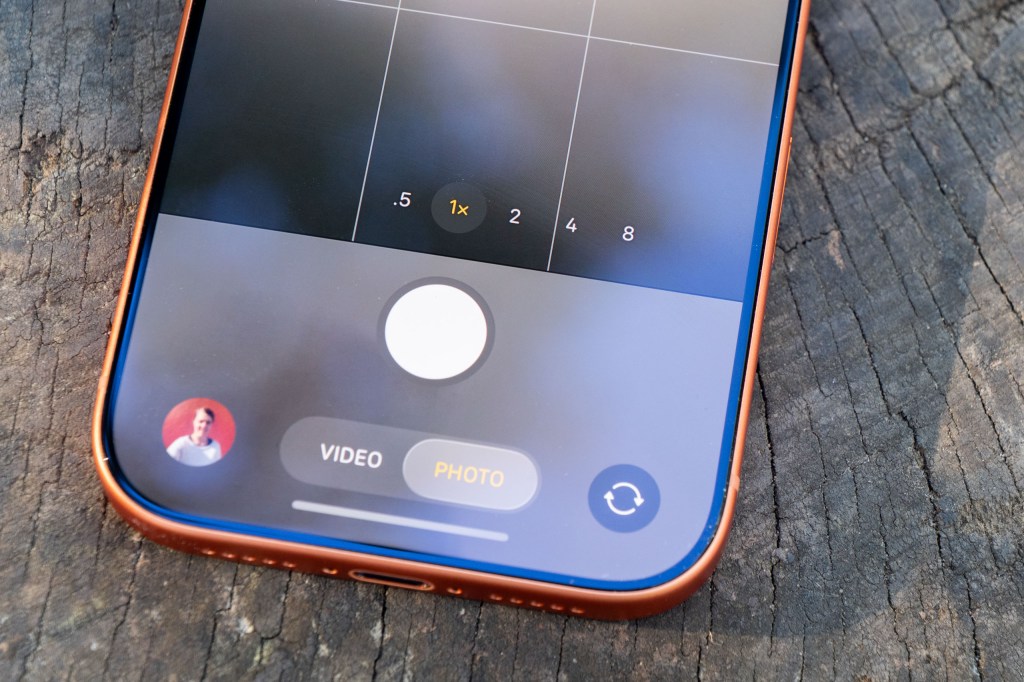
A number of different modes can be used, but the default option is Photo. It’s here you’ll probably take the majority of your photos. It gives you access to all the different lenses (and digital / crop options in between), as well as things such as Photographic Styles for changing the look of your shots. Some additional options can be found in the top right hand corner, including exposure compensation, aspect ratio and flash.
There is a Portrait mode, but as we’ve seen for a couple of generations now, the phone should automatically recognise when a person or a pet (dog or cat – though in practice I’ve seen it work on other animals) is in the frame and give you the option to quickly turn on Portrait shooting. Or, even more cleverly, you can turn standard Photos into “Portrait” shots after the fact. This is something I use all the time when taking pictures of my daughters, as I’ve often quickly grabbed a shot while they’re on the move and don’t always remember to switch on Portrait mode.
Night mode remains an automatic option, not something you can manually choose to switch on or off. It should kick in when the phone notices that there’s not much light in the scene, and when it does appear you can adjust the settings from auto to max for longer exposures.
Macro shooting is another automatic option, activating when you bring the phone close to a subject. Apple uses the ultrawide for close-up shots, cropping into the full resolution image to retain the same angle of view. This also means that the image will be cropped to 12MP.
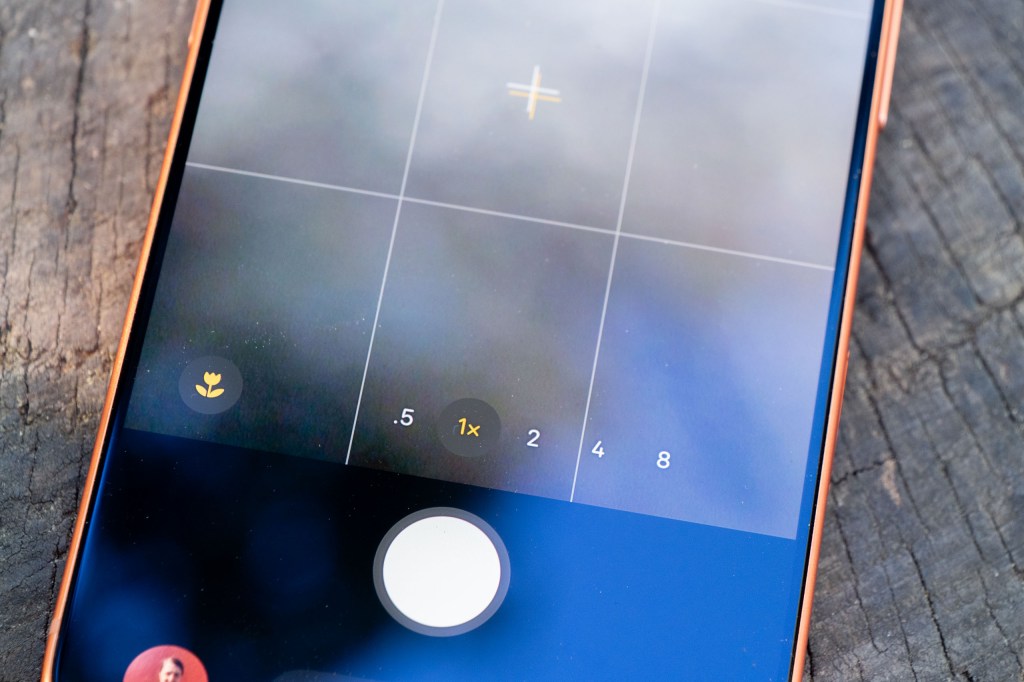
One key difference for the new iOS 26 version of the native camera app is that the default Photo and default Video modes are displayed as two separate sections, giving you the option to quickly jump between the two types of recording. As before, you can hold down the shutter button to grab a quick video when in Photo mode, too. Other shooting modes are included, but there’s not as many as we see on a typical Android phone. For stills, there’s a Portrait mode for shooting shallow depth of field effects, as well as a panoramic option.
Flip to the front camera and you’ll see the new icon for rotating to horizontal format, without having to physically rotate the phone. You can also set it to automatically zoom and rotate if people join or leave the selfie, too.
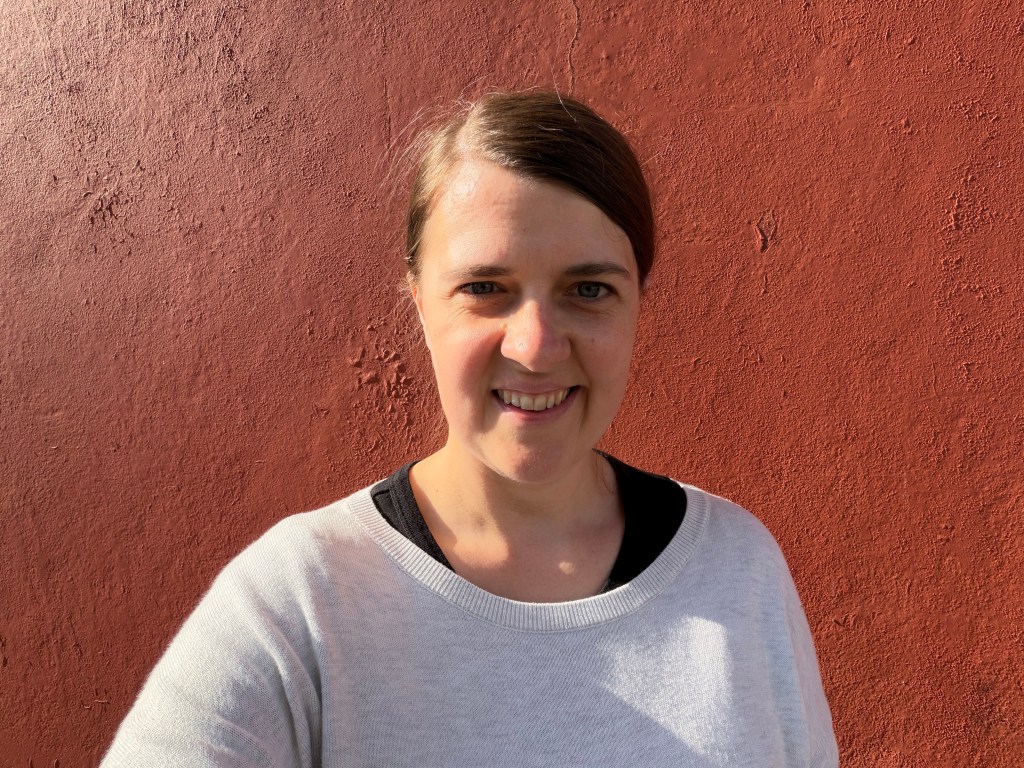
By default you can shoot images in HEIF (High Efficiency Image Format) or RAW directly within the app, but you can also shoot in the more widely compatible JPEG format if you prefer, but you’ll need to head to the main settings menu of the phone to do that. These days, I generally always shoot in HEIF to save space. It’s easy enough to convert an image if you need to, and all the major apps (i.e. WhatsApp and Instagram) know what to do with HEIFs anyway.
For video, there’s the standard video option, but there’s also other options such as Time-Lapse, Slo-Mo and Cinematic – all video options which have been around on iPhones for several years now. You can quickly switch between different frame rates and resolutions, as well as switching on the more advanced options such as ProRes recording.
For the selfie camera, you can record in either vertical or horizontal format while holding the phone vertically – useful if you want to record horizontal videos while walking and talking, as the phone feels much more secure in the hand that way. A fun new feature is the Dual Capture option which records video from both the selfie camera and the rear camera at the same time so you can narrate your surroundings. The box with your own face in can be placed in any of the four corners of the recording – but note that you can’t move it after the fact in editing, which is a shame if you realise on watching it back that the selfie part is obscuring something important.
iPhone 17 Pro – Performance
Another year rolls around and it’s another year of me saying that once again, the top-line iPhone takes excellent photos. Of course it does, it did last year and the year before that. The iPhone 17 Pro is great, but so was the iPhone 16 Pro, and even so was the iPhone 15 Pro. You’ll probably need to be jumping up from a model even older than that to notice any huge difference in image quality, though there are some key improvements to take note of.

The telephoto lens is now 48MP, compared to last year’s 12MP. You can see some extra detail resolved with the iPhone 17 Pro’s lens, but it’s really only noticeable if you zoom in closely and really look for it.
What the 48MP gives you is better scope to crop though, which is where the promised 8x “optical quality” option comes in. And yeah, that’s pretty good – certainly good enough for a phone screen, and for viewing or printing at small sizes.
On the whole, all three of the lenses perform extremely well – certainly in good light. Detail is very well resolved, exposures are well balanced, and the colours are nice and vibrant.
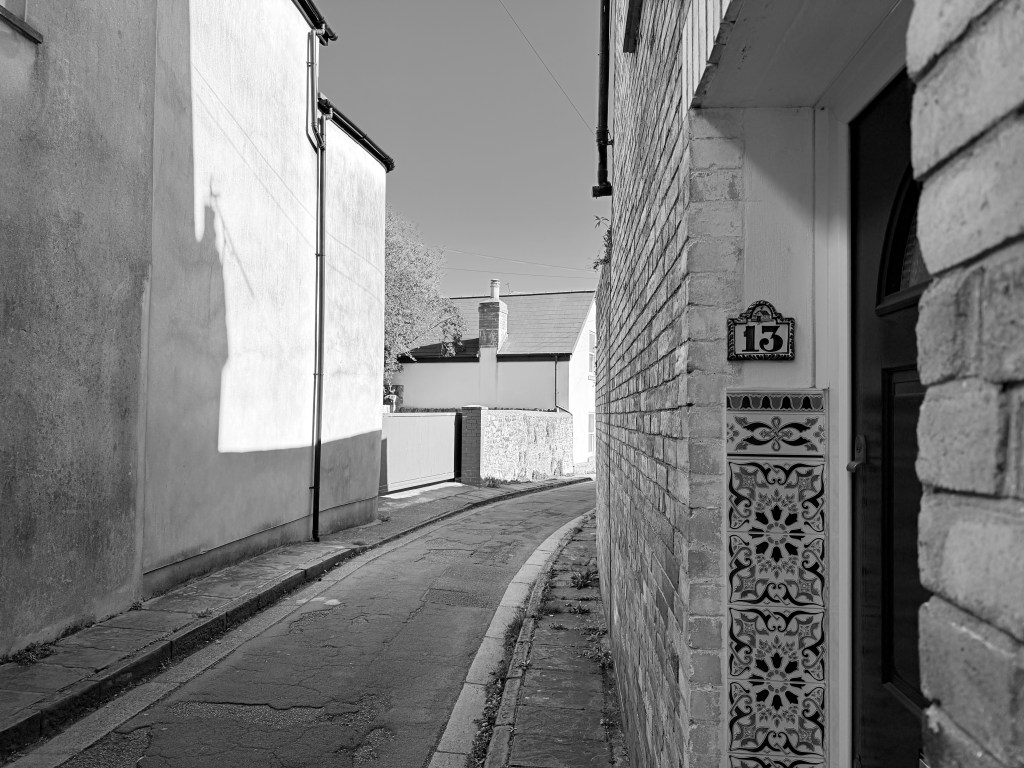
You can experiment with different colour treatments using Picture Styles, which is quite fun too. I sometimes like to shoot in black and white, even if I then revert back to colour at a later stage.

Portrait mode is very good, albeit sometimes still struggling a bit with fussy hair and so on in an outline. This can mean that it’s quite obviously a fake bokeh setting, especially if you look closely, but overall the effect is quite good.
Apple has been using the same selfie camera for the iPhone series for such a long time, that it’s interesting to finally see some changes made. It can produce some lovely selfies, and you can see a little more detail than in previous generations. The square sensor enabling different orientations without moving the phone might seem a bit of a gimmick, but I found it quite useful and easier to hold and frame a selfie.
Night mode puts in a good performance, with both the wide and the ultrawide displaying good levels of detail in very dark conditions. In these pictures here, for example, the foreground detail is very difficult to see with the naked eye, but the phone has picked it out well. When it’s this dark, the phone will generally crop from the main sensor if you select 2x or 4x options, which doesn’t look quite so good – but it is passable if you do need to get that bit closer.
Although very good, I can’t see any dramatic improvement from the iPhone 16 Pro. But again, there’s a bigger difference if we look at older models.
You can get some great close-ups using the macro mode, which jumps to using the ultrawide camera (with AF). However, the results are more or less the same as the previous model, and we’re also seeing much better macro options from phones which use the telephoto lenses – a particular favourite of mine is the Xiaomi 15 Ultra. Still, the results should be good enough for most.
Video is captured very well, with nicely smooth shots – even walking and recording at the same time. You can switch on the Action Mode if you want even smoother shots. Detail and exposure is also generally well-rendered, too. The new Dual Capture option is quite fun, works well – and may be a very useful tool for content creators.
iPhone 17 Pro – Value for Money
Look, there’s no getting around the fact that iPhones are expensive. But, they’re on par with several high-end Androids these days, if not cheaper. The iPhone’s base price has hovered around the same figure for a number of years now too, despite rising production costs and tariff wars.
This year, Apple has got rid of the base 128GB option, so it seems like it’s more expensive. It means you can no longer get a cheaper entry into an iPhone Pro model, but, technically, it also means that the price for the equivalent model hasn’t risen since last year.
$1099/£1099 for the iPhone 17 Pro 256GB makes it about the same price as the current selling price for the Samsung Galaxy S25 Ultra, which has a much larger screen and an additional camera unit (I actually don’t like the largeness of the screen, but Samsung only offers one size for it’s top of the range model). It’s also more expensive than the cheapest Pixel 10 Pro, but, again, that’s a 128GB option, so like-for-like iPhone and Pixel are about the same price.
You can also compare prices against other iPhone models, both in the current range and for those considering upgrading. Let’s face it – if you like iPhones you tend not to think about Androids that much anyway.
I’d say if you have an iPhone 16 Pro from last year, the increase here is fairly incremental and probably not worth shelling out for. That is, unless you desperately want a bit longer zoom, or are very drawn in by the new selfie camera. If you’ve got a 15 Pro there’s a bit more to entice you, but even better is upgrading from an iPhone 14 Pro or older – you’ll really a notice a difference then.
Within the current range, you’ve also got the standard iPhone 17 to consider. It doesn’t look quite as fancy and you lose the telephoto lens, but at a starting price of $799/£799 you get a very good iPhone for your cash. There’s also the iPhone Air, but as that has only one lens, it feels hard to recommend that to photography enthusiasts (it does look very nice though).
iPhone 17 Pro – Verdict
The iPhone 17 Pro is a great smartphone for photographers, being capable of taking excellent images and video.
As I say pretty much every year, however, it doesn’t represent a huge evolution in terms of the camera. There are a couple of good improvements – such as finally having three high-resolution sensors, and a long overdue upgrade to the selfie camera. The new square sensor giving you the option to capture selfies horizontally without moving the camera is a feature I scoffed at when I heard about it, but I actually liked it quite a lot in the end.
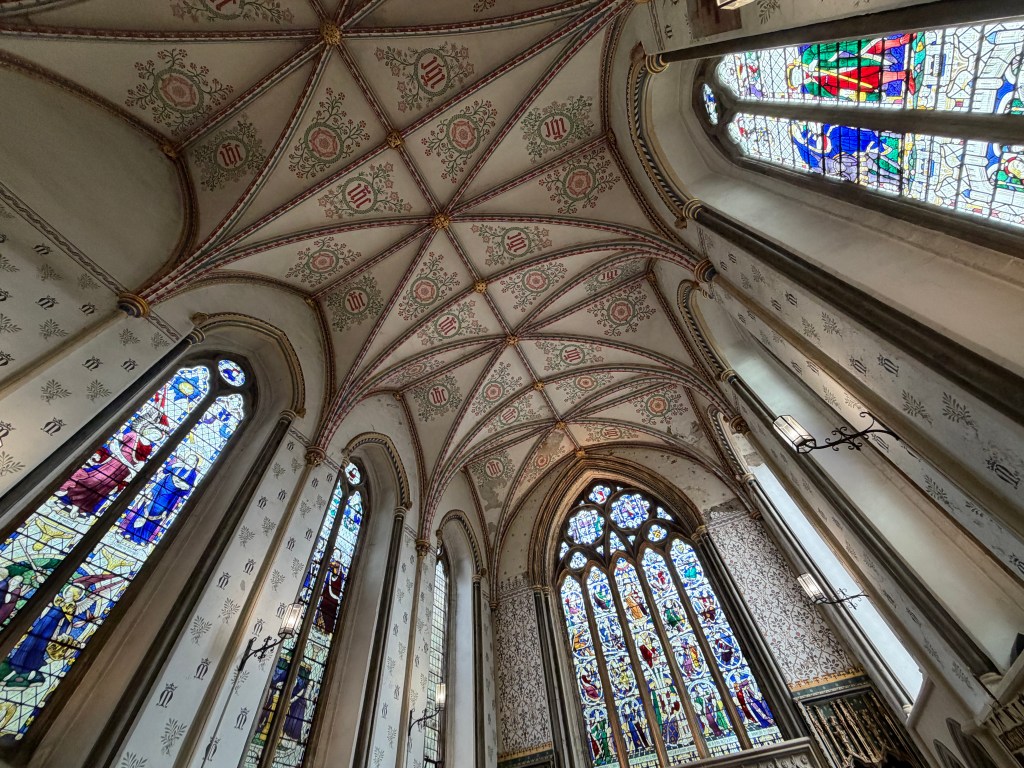
Elsewhere, improvements to things such as battery life, the anti-reflective coating, and the brightness of the screen are all nice-to-haves, but may not be quite enough to tempt you if you already have an iPhone 16 Pro, and possibly the iPhone 15 Pro. Still, keeping hold of your phone for a number of years is no bad thing.
The new design with the camera plateau is a bit more striking than previous generations, but it’s also arguably a bit odd looking. Although it’s nice to see something a bit different, I’m not entirely convinced by the vibrant orange colour, and would have loved to have seen some of the cuter pastel colours the iPhone 17 offers.
Many who love iPhones may not consider switching to Android, but, if you’re a photographer, it still remains true that there are other models which offer more – the Xiaomi 15 Ultra is still my current favourite, while the Samsung Galaxy S25 Ultra is also a very solid performer, too.
One thing I’ve always liked about the iPhone Pro series is that it comes in two sizes – something you just don’t seem to get with Android models. You don’t get penalised by a poorer camera system if you want a smaller screen. Most of this review could be about the iPhone 17 Pro Max as well as the iPhone 17 Pro – I happen to prefer the handling of a smaller device, while it’s also a bonus that it’s a bit cheaper too. Which you prefer is up to personal taste.
It’s fair to say that the iPhone 17 Pro is the best iPhone yet – of course it is – and can happily find a place on our list of the best smartphones for photographers.
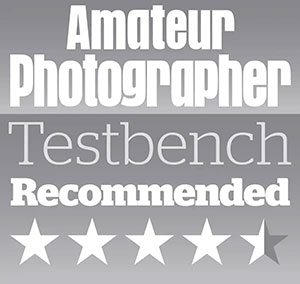
Related reading:
- Best phone tripod for iPhones and smartphones
- iPhone 16 Pro Max vs iPhone 16 Pro: Are the cameras the same?
- I review iPhones for a living – these are the best iPhones for photography
- iPhone 16e vs iPhone 16 Pro: I tried swapping my iPhone 16 Pro for Apple’s budget phone

